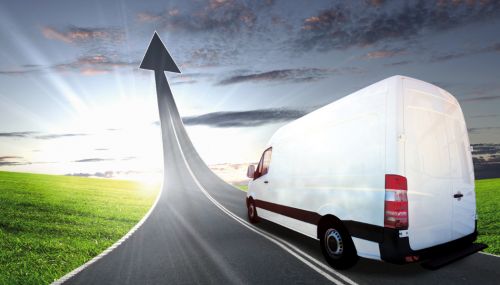All
Show Your Work
by Richard Rutigliano, PriMedia, Inc.

Use online GHG calculators to help prove your value to the community
Liquid heating fuel retailers, wholesalers and producers have been helping homeowners and businesses reduce their use of fossil fuels and reduce carbon, sulfur and other greenhouse gases for years.
They - you - are doing great work. You are making a positive change for our environment. But are you letting your community and elected officials know? Are you “showing your work?”
From an early age, students are told to “show their work.” They can lose points, even when getting the right answer, if they can’t prove out their solution. As an industry, we need to show our work as well. We need to prove to the world that our liquid heating fuels are an integral part of the solution to climate change.
Making A Difference
There are many ways members in the industry are making a difference. It started years ago, as we moved from traditional heating oil to low sulfur and then ultra-low sulfur heating oil. That change alone reduced sulfur emissions from 500 ppm or more to less than 15 ppm.
That, of course, was only the first step. How many of the following eco-friendly strategies are part of your business model?
- Installing high-efficiency heating equipment
- Retrofitting current equipment with B100-certified burners
- Delivering or producing Bioheat® fuel or other bio-blends
- Using biodiesel in your vehicles
Every one of these actions reduces your carbon emissions and/or those of your customers. For commercial customers reporting their environmental, social, and governance (ESG) activities, the changes you make affect their Scope 1 and Scope 2 emissions. Your renewable liquid heating and non-heating fuels and installation of high efficiency equipment, insulation, and other weatherization and conservation efforts reduce their Scope 1. Your biodiesel-fueled delivery trucks affect their Scope 2 and 3 calculations. As more companies release annual ESG reports in response to governmental or societal pressure, they will choose providers who can help bring those numbers down.
Biofuels By The Numbers
Every gallon of biofuel delivered immediately reduces the customer’s GHG emissions. We know that a B20 blend will cut carbon by approximately 15 percent. B50 reduces carbon by approximately 40 percent. Biofuels also reduce the amount of fossil fuels used, and every gallon of heating oil saved cuts approximately 23 pounds of carbon from system emissions.
Renewable liquid fuel industry marketers should consider installing a carbon calculator on their websites to convey these efforts. They can thus promote their company-wide reductions on their home page. A company that delivers one million gallons of B20, for example, can proudly proclaim that they have delivered 200,000 fewer gallons of fossil fuels and reduced emissions by 4.6 million pounds of carbon. This calculator can and should be developed to provide real-time results that are updated with every delivery.
In the same vein, companies can integrate their deliveries to each customer and provide personalized emission reduction calculators connected to their online accounts. Imagine your customers’ delight when they open your online account management portal and see the real difference your fuels are making in their carbon footprint. A customer who has used 326 gallons of your B20 fuel in the first few months of the season could log in and see that you have helped them cut their carbon emissions by approximately 1,500 pounds.
It can be hard, though, for individuals to visualize what a figure like “1,500 pounds of carbon” really means. The EPA offers a “conversion calculator” which translates carbon emissions into tangible equivalencies, such as the number of smartphones charged, gallons of gasoline consumed, miles driven in a passenger car, or propane cylinders for home barbecues. That 1,500 pounds of carbon can now be presented as the equivalent of charging 44,917 smartphones, using 76.6 gallons of gasoline, driving 1,740 miles, or grilling their way through 31.3 propane cylinders.
These are numbers that will mean something to your customers. Your web developer should be able to integrate your data, set up the backend logic, access the EPA calculator, and create arresting visuals to get the point across.
Upgrading For The Future
Every new boiler or furnace installed reduces fuel use and carbon emissions – these facts are part of the explanation we give customers about the benefits of equipment upgrades. Based on the data we have compiled through the more than 11,500 equipment upgrades completed through the Upgrade & Save Rebate Program, most dealers are replacing 30-year-old boilers and furnaces, and the new models are increasing efficiency by 12-15 percent. Their homeowners are using approximately 100 fewer gallons and reducing their carbon emissions by more than one ton annually. The reduction in gallons also corresponds with financial savings, which varies with the price of fuel, but at current prices at the time this article is being written, the homeowner would save approximately $400 per year.
Are you showing this to your community? We provide reports to NORA, participating associations, and governmental agencies on the average annual per-home carbon, fuel, and monetary savings from rebate program equipment installations. We then expand those results to forecast 25-year results, as well as annual and 25-year estimates for the organization's total number of installations.
Some associations have added a Fuel Savings, Efficiency and Environmental Benefits Report to their consumer-facing rebate websites. A similar report can be added to your company’s website, educating your customers about the good work you are doing to help the environment. Your totals can also be plugged into the EPA conversion calculator to provide accessible equivalents.
Going Offline
As you show your work to the community, don’t forget to take this data offline. These real benefits should be included in your newsletters and marketing materials. You can connect a monitor in your office to your online calculator and display your real-time results to anyone who walks in. Consider sending eblasts when you reach milestones for gallons saved, dollars saved, carbon emissions cut, or other metrics. Turn these results into infographics, flyers, and social media posts. You have a lot to be proud of, and your customers should be proud of you and their results as well.
Beyond Home And Retail
Emission reduction calculators can be used for wholesalers, commercial fuel providers, and producers as well. Once the concept is in place, the rest is a matter of math. Whether we’re talking about a retailer’s annual sales of biofuels or a producer’s annual production of biodiesel, the building blocks are the same.
As the industry looks for ways to promote the benefits of RLHF, calculators such as these can and should be used to “show our work.” Day after day, liquid fuel retailers, wholesalers, and producers are cutting carbon emissions and lowering their customers’ costs. It is beyond time for the rest of the world to see our successes at work.
Richard Rutigliano is President of PriMedia, Inc., an integrated marketing and communications firm specializing in the home energy sector. He can be reached at 516-222-2041 or rrutigliano@primediany.com.
Related Posts
 When Business Priorities Collide
When Business Priorities Collide
Posted on December 18, 2025
 It’s Upgrade Season. Get the Sale.
It’s Upgrade Season. Get the Sale.
Posted on October 16, 2025
 Your Business Rises and Falls by Your Customer Service
Your Business Rises and Falls by Your Customer Service
Posted on September 19, 2025
 Teamwork Makes the Dream Work!
Teamwork Makes the Dream Work!
Posted on August 18, 2025
Enter your email to receive important news and article updates.
